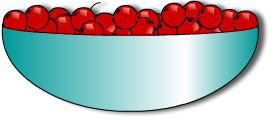Copyright © University of Cambridge. All rights reserved.
'Cherries Come in Twos' printed from https://nrich.maths.org/
Show menu
Why do this problem?
This problem provides practice in addition and subtraction and in an arithmetic sequence. Learners will need to use a systematic approach of trial and improvement. Although the problem does not require the use of symbols it does encourage the use of generalising patterns.
Key questions
Is there and odd or even number of cherries?
What would be a good number to try for a start?
How many cherries does Susie eat during each round of helping herself to pair, pair, single cherries?
How many extra single cherries are there in the bowl after each round?
Can you think of a good way of recording what you have done?
Can you see any patterns in it?


